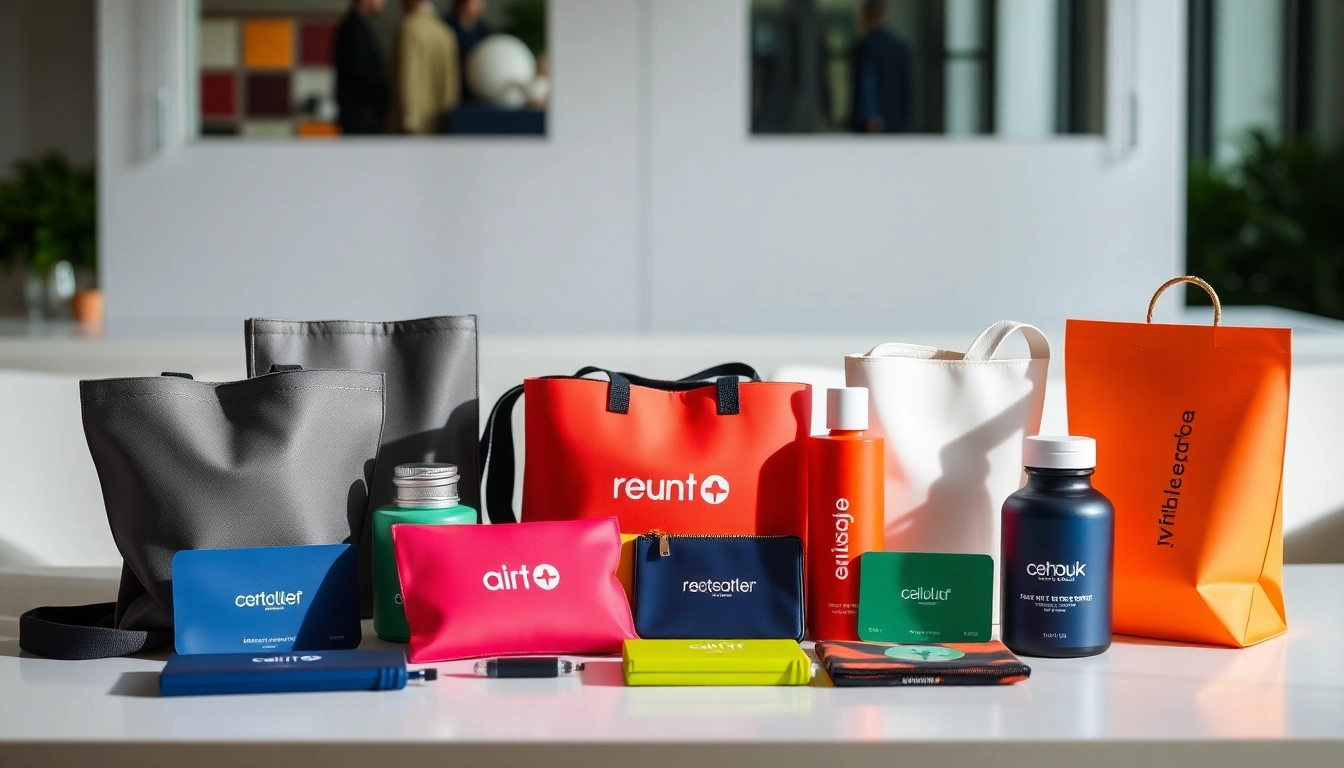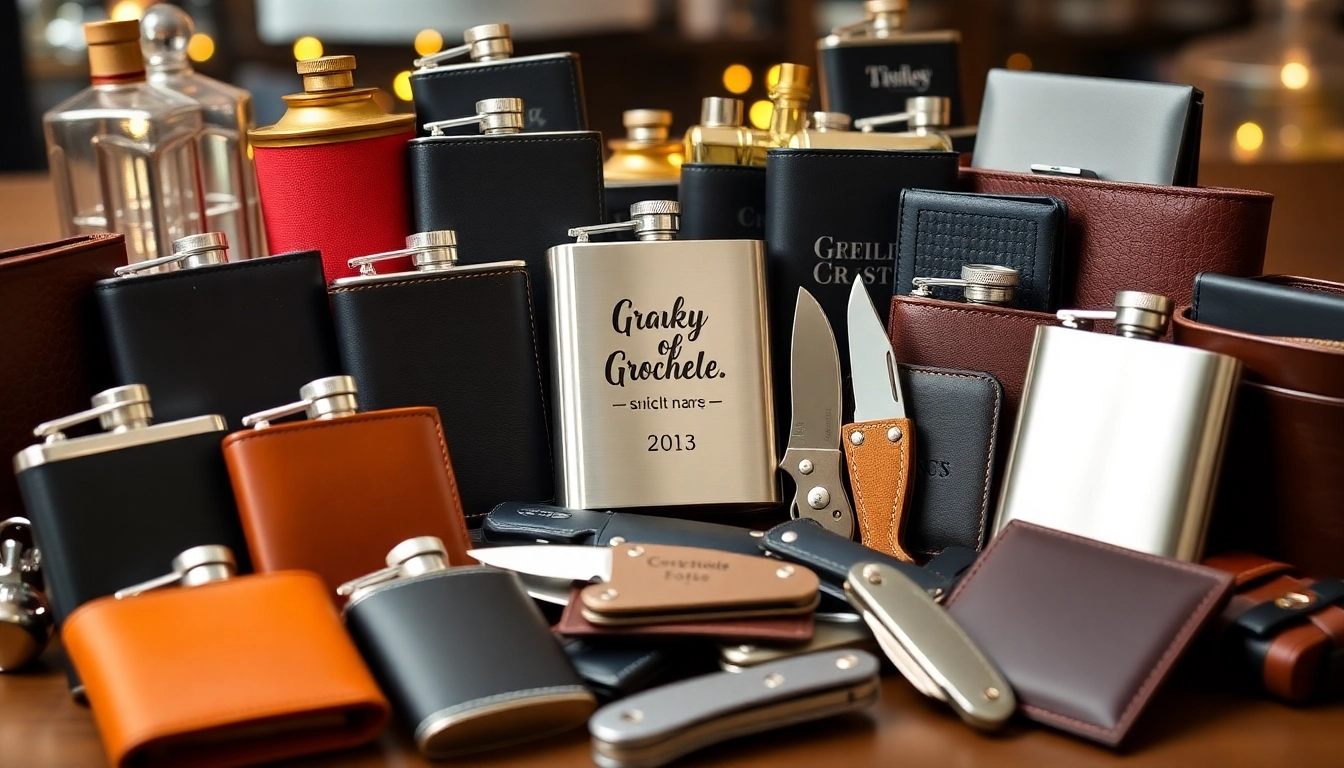Understanding Promotional Products
What Are Promotional Products?
Promotional products are tangible items branded with a company’s logo or message, distributed to promote a brand, product, or service. These items range from simple everyday items like pens and notepads to more elaborate gifts such as tech gadgets or eco-friendly products. Their primary function is to create brand awareness, generate leads, and foster customer loyalty. When strategically selected and distributed, promotional products can yield a significant return on investment, making them an integral part of many marketing campaigns.
The Psychology Behind Promotional Products
The effectiveness of promotional products can largely be attributed to psychological principles. They evoke feelings of appreciation and goodwill among recipients, fostering a positive association with the brand. This psychological connection is crucial, as studies indicate that consumers are more inclined to purchase from brands that have provided them with something free or of perceived value. The act of giving often creates a reciprocal response—a predisposition to buy, engage, or support the brand in return.
Benefits of Using Promotional Products in Marketing
Utilizing promotional products in marketing strategies offers numerous advantages. Firstly, they can significantly increase brand visibility; the more a product is used, the more exposure it generates. Additionally, promotional products tend to have a longer lifespan compared to traditional advertisements. For example, a customized mug may be used daily, while a television ad is fleeting. Furthermore, they enhance customer relationships by providing tangible reminders of the brand, which can aid recall during purchase decisions. Lastly, promotional products often lead to a higher engagement rate during events or campaigns, which can translate into increased sales.
Choosing the Right Promotional Products
Identifying Your Target Audience
Understanding your target audience is crucial when selecting promotional products. Different demographics have different preferences and needs. For instance, tech-savvy individuals may appreciate USB drives or phone accessories, whereas an audience focused on sustainability might prefer reusable bags or bamboo products. Conducting audience research through surveys or social media analysis can help tailor your choices effectively. Consider aspects such as age, gender, occupation, and lifestyle to create an effective selection that resonates with them.
Aligning Products with Brand Messaging
Your promotional products should align with your brand message and values. If your brand promotes health and wellness, opting for products like fitness trackers or water bottles makes sense. Conversely, a brand focused on luxury might choose high-end gadgets or customized leather goods. The product should not only reflect your brand but also complement your overall marketing strategies. This alignment enhances the consistency of your message and strengthens brand identity in the minds of consumers.
Evaluating Quality vs. Cost
While budget constraints are a reality for many businesses, compromising on quality for cost can be counterproductive. High-quality promotional products are more likely to be retained and used, leading to greater brand exposure. Poor-quality items may create a negative impression and can even damage brand reputation. Thus, it is essential to strike a balance between quality and cost. Establish a budget but prioritize selecting products that reflect your brand’s standard of quality. Consider value-added offers such as bulk purchasing discounts to maximize your expenditures creatively.
Designing Effective Promotional Products
Incorporating Your Logo and Brand Colors
The design of your promotional products plays a critical role in their effectiveness. Your logo should be placed prominently on the product so that it is noticeable but not overpowering. Consistency in brand colors helps in reinforcing brand identity. Ensure your logo is adaptable to various product types while maintaining visual appeal. This consistency allows customers to associate the items with your brand instantly, enhancing recognition.
Crafting Catchy Taglines and Messages
Incorporating a catchy tagline or message can significantly enhance the impact of your promotional products. This text should be concise, memorable, and relevant to your brand’s ethos or the product’s functionality. For example, something humorous or thought-provoking can elicit a positive emotional response, increasing the odds that the recipient will keep the item and remember your brand. Conducting A/B testing with different taglines can help determine what resonates best with your audience.
Choosing Material and Functionality
The material and functionality of a promotional product can greatly influence its effectiveness. High-quality materials not only enhance the perceived value of the product, but also ensure longevity. Meanwhile, functionality is key; a practical product will likely be used regularly, keeping your brand top-of-mind. Products such as eco-friendly materials can also reinforce a commitment to sustainability, positively impacting consumer perception and engagement.
Strategizing Your Promotional Product Campaign
Setting Clear Objectives and Goals
Before launching a promotional product campaign, it is vital to set clear objectives and goals. What do you want to achieve? Increased brand awareness, customer acquisition, event attendance, or sales growth? Defining measurable goals allows you to track progress effectively and adjust tactics as necessary. Setting SMART (Specific, Measurable, Achievable, Relevant, Time-bound) goals can help in structuring your approach and refining it based on performance outcomes.
Choosing the Right Channels for Distribution
The distribution channels for your promotional products can significantly impact their success. Online platforms can be effective, particularly when paired with campaigns on social media or email marketing. For events, such as trade shows or conferences, in-person distribution can lead to immediate engagement. Understand where your target audience spends their time and tailor your distribution strategy accordingly. The right timing and channels can amplify reach and engagement levels.
Measuring the Impact of Your Campaign
Once your promotional product campaign is underway, it is essential to measure its impact to determine success. Key performance indicators (KPIs) may include brand recall, engagement rates, website traffic, and sales conversions linked to the campaign. Surveying recipients and tracking their subsequent actions can provide invaluable insights into effectiveness. Adjustments may be needed in future campaigns based on what metrics reveal about user interaction and success rates.
Case Studies: Successful Promotional Product Campaigns
Industry-Specific Examples
Understanding successful promotional product campaigns from various industries can provide valuable insights. For example, tech companies often utilize promotional USB drives filled with brand information and demos as giveaways during seminars. In contrast, healthcare providers might offer stress-relief balls or first aid kits, which serve both a practical purpose and build positive associations with their brands. Each case illustrates how promotional products are tailored to specific audiences and industries effectively.
Lessons Learned from Top Brands
Top brands often share common traits when it comes to their promotional product strategies. They recognize the importance of customizing products for their audience, investing in quality items, and utilizing clever branding. For instance, Coca-Cola’s iconic contour bottle has been turned into various promotional products, from openers to clothing. The success of such campaigns teaches that creative product utilization and strong brand identity can lead to engaged consumers and lasting impact.
Innovative Trends in Promotional Products
The promotional product industry is ever-evolving, with innovative trends emerging regularly. Recent trends include eco-friendly products, customization possibilities using innovative printing techniques, and tech gadgets that resonate with younger, tech-savvy audiences. Brands are increasingly leveraging experiential marketing by integrating promotional products into unique experiences, sparking greater emotional connections. Understanding and adapting to these evolving trends can keep your promotional strategies relevant and impactful.



